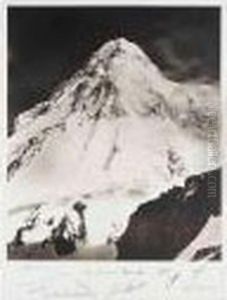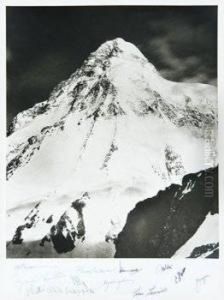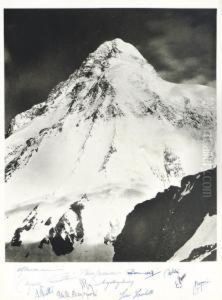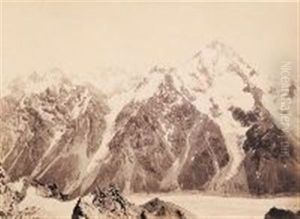Vittorio Sella Paintings
Vittorio Sella was an Italian photographer and mountaineer, renowned for his pioneering photography of the Alps and some of the most remote mountain ranges in the world. Born on August 19, 1859, in Biella, in the Piedmont region of Italy, Sella came from a family with a rich history in mountaineering; his uncle, Quintino Sella, was a noted politician and founder of the Italian Alpine Club.
Sella combined his passion for climbing with his skill in photography, a relatively new and challenging art form at the time. He is particularly noted for his expeditions in the Alps, the Caucasus, Mount St. Elias in Alaska, the Ruwenzori Range in Uganda, and the Himalayas. He was able to capture stunning, high-quality images of peaks, glaciers, and alpine landscapes that had never been photographed before, doing so under extremely difficult conditions that required hauling heavy camera equipment and glass plates to high altitudes.
Over the course of his life, Sella's work did more than document mountain scenery; it also made significant contributions to the fields of geology and geography. His photographs served as scientific evidence and were used for cartographic and topographic studies. He received international acclaim for his achievements, and his photographs were exhibited worldwide.
Sella was also a respected member of several major mountaineering expeditions, including the famed 1909 expedition to K2, where he photographed the notorious 'Sella Pass.' His photographs were instrumental in planning future climbs and expeditions, as they were among the few accurate visual records of these remote areas.
Vittorio Sella continued to climb and photograph mountains well into his seventies. His legacy includes thousands of images that continue to inspire climbers, geographers, and lovers of wilderness. Sella's work remains a valuable historical record of the world's mountain regions as they appeared in the late 19th and early 20th centuries. He died on August 12, 1943, leaving behind a body of work that still stands as some of the most important visual documentation of mountain environments in the history of photography.



